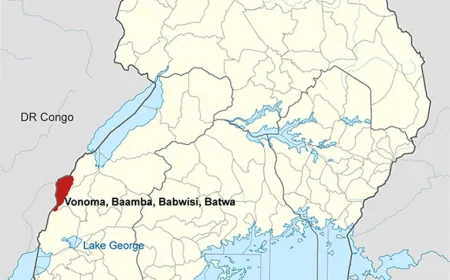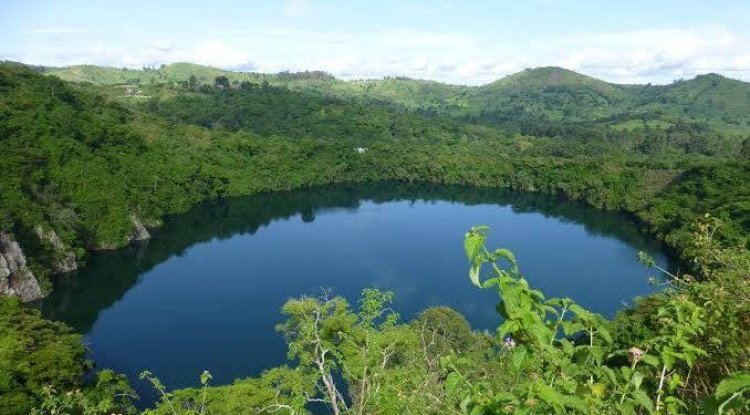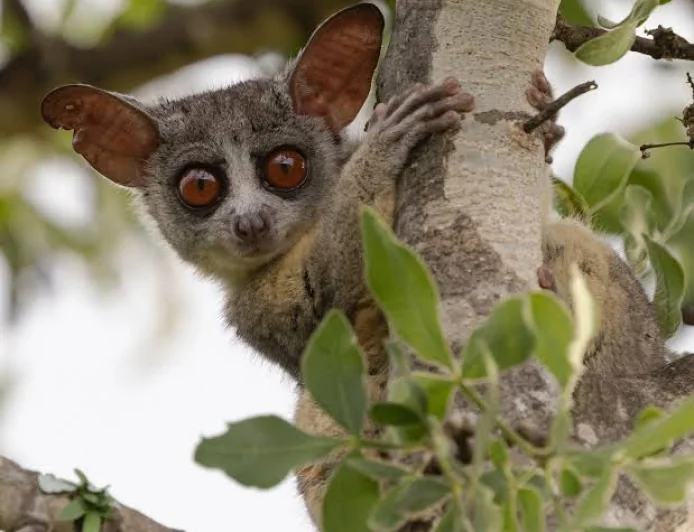Rothschild's giraffe
Murchison Falls National Park is home to Rothschild's giraffes. Uganda's giraffes, a really unique species, are restricted to just four locations: Murchison, Lake Mburo, Kidepo Valley, and Pian Up Game Reserve.

One of the most fascinating big game creatures in Uganda is the Rothschild's Giraffe, often known as the Ugandan Giraffe or the Baringo giraffe. Exceptionally tall and only found in sub-Saharan Africa, giraffes are a species unto themselves. The indispensable giants require only around 30 minutes of sleep per day.
Differentiating the Rothschild's giraffe from other subspecies is a breeze. A change in the coat's or pelt's colour is the most noticeable tell. Rothschild's giraffe looks more like the Masai giraffe than the reticulated giraffe, which has distinct dark spots with bright-white channels between them. However, the Rothschild ecotype is paler than that of the Masai giraffe, the orange-brown spots are less angular, and the connective channel is creamier in colour than that of the reticulated giraffe. The lack of markings on the lower legs of a Rothschild's giraffe makes it look like it's donning white stockings.
The amount of ossicones on the skull is another, more subtle, way to identify a Rothschild's giraffe. The birth of a giraffe with five ossicones is a very rare occurrence. There are four giraffes on a giraffe's head, two of which are the larger and more noticeable ones at the top of the head. The giraffe's third ossicone is often located in the middle of its forehead, with the other two ossicones being found behind each ear.
Males usually weigh several hundred pounds more than females, and constant fighting wears down the hair on their two largest ossicones. They are often darker than females, but this is not a foolproof method of determining sex.
Vocalisation.
Since the Rothschild's giraffe is rarely heard, most people think it is a quiet animal.
Sometimes, giraffes will vocalise to one another with grunts or whistle-like calls in addition to using infrasonic sounds. Giraffes use a wide variety of vocalisations to communicate, including moans, snores, hisses, and even flute-like notes.
Giraffes can whistle to their calves and use booming cries to find lost young, whereas giraffes can grunt or snort when disturbed to warn other giraffes of the danger. Calves respond to their mothers' bleating or mewing by making noises of their own.
Male giraffes may cough loudly when trying to attract the attention of an oestrous cow.
Reproduction of Rothschild's Giraffe.
Rothschild's giraffes give birth to a single calf after 14 to 16 months of pregnancy. They congregate in small groups called herds, and the only time the males and females (and their young) come together is during mating. When not threatened, Rothschild's giraffes tolerate the presence of other species. They are generally peaceful, but males have been known to fight for females. Since this species can have babies at any time of the year, these problems seem to happen often.
The Rothschilds' Giraffe Diet.
In regions of the savanna where the ground is saline or full of minerals, Rothschild's giraffe can be found grazing on a variety of plant life, including leaves, flowers, seedpods, and fruits. They eat soil as well; they are ruminants and have a four-chambered stomach. By chewing cud on the move, they can increase their chances of finding food.
These browsing animals can reach the highest branches because they have long tongues, thin muzzles, and upper lips that can bend. Acacia senegal, Mimosa pudica, Combretum micranthum, and Prunus armeniaca are just some of the tree species that they graze.
What they eat most of all are the leaves of Acacia trees. When foraging, giraffes grab branches in their mouths and pull the branch's head away from the trunk in order to strip the leaves. The thorns of acacia trees are no match for a giraffe's powerful teeth.
Finding Rothschild's giraffes in Uganda.
The current population of Rothschild's giraffes in Uganda exceeds 1,550. The northern portion of Murchison Falls National Park, Kidepo Valley, Lake Mburo, and, most recently (2019), the Pian Upe Game Reserve are among the most common places in which you can see this species.
What's Your Reaction?
 Like
0
Like
0
 Dislike
0
Dislike
0
 Love
0
Love
0
 Funny
0
Funny
0
 Angry
0
Angry
0
 Sad
0
Sad
0
 Wow
0
Wow
0













































































